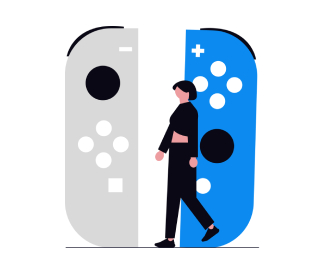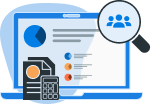What Are Connected Workers?
Connected workers refers to employees who use digital technologies to stay continuously connected with their teams, machines, and business systems in real-time. These technologies may include mobile apps, smart wearables, augmented reality (AR) tools, cloud-based platforms, and collaboration software.
These employees typically operate in field locations, on the shop floor, or in client-facing roles. Unlike traditional office-based workers, connected workers are supported by a digital ecosystem that allows them to
- Access job instructions instantly
- Monitor workflows remotely
- Report issues through mobile devices
- Collaborate with supervisors and peers in real-time
- Collect and analyse performance data
In HR, this concept becomes particularly valuable for tracking productivity, optimizing shift schedules, ensuring compliance, and driving better engagement among on-ground teams.
How Does a Connected Worker Boost Productivity in HR Operations?
When deployed effectively, connected-worker strategies have a direct and measurable impact on HR performance and workforce productivity.
1. Real-Time Workforce Monitoring
HR teams can track real-time attendance, shift updates, and task progress using integrated apps or smart devices. This improves visibility across teams and helps identify performance gaps quickly.
2. Streamlined Communication
Connected workers benefit from instant communication through chat platforms, mobile notifications, or AR-enabled instructions. HR can push critical updates, policy changes, or compliance alerts instantly across distributed teams.
3. Reduced Downtime and Errors
By providing connected workers with up-to-date task instructions, real-time support, and instant feedback loops, errors are reduced and downtime is minimized, particularly in high-compliance industries.
4. Employee Engagement and Retention
When workers are equipped with tools that make their jobs easier and more efficient, job satisfaction increases. This leads to lower attrition and better engagement scores, key HR metrics.
5. Data-Driven Decision Making
Connected-worker platforms collect valuable data points from time tracking to health checks, enabling HR to make informed decisions regarding workforce planning, performance management, and policy adjustments.
What Technologies Enable a Connected-Worker Ecosystem?
Building a connected-worker ecosystem involves integrating various hardware and software solutions that enable seamless interaction, monitoring, and collaboration across the workforce. Key technologies include
1. Wearables and Smart Devices
Real-time notifications and hands-free access to information are made possible by biometric sensors, smartwatches, smart helmets, and augmented reality glasses. These are commonly used in industries like construction and manufacturing.
2. Mobile Applications
Custom-built mobile apps allow workers to access schedules, submit reports, raise tickets, and receive instructions on the go. HR teams also use these platforms for surveys, check-ins, and training.
3. IoT (Internet of Things) Devices
IoT-enabled tools collect and transmit data from machines or tools used by the connected worker. This helps monitor performance, maintenance needs, and operational efficiency.
4. Cloud-Based HR Systems
Cloud HRMS or workforce management systems centralize data and enable real-time tracking, analysis, and updates from connected workers across locations.
5. AI and Predictive Analytics
AI algorithms can analyze data generated by connected-worker tools to predict equipment failures, absenteeism trends, and even skill gaps, enabling proactive HR intervention.
6. Learning Management Systems (LMS)
Connected workers can undergo training and microlearning via LMS platforms directly from their mobile devices, even on the job, making continuous skill development easier.
Why Should You Care About Connected-Worker Strategies?
For organizations and HR leaders, implementing a connected-worker strategy is no longer a futuristic concept; it's a competitive necessity. Here's why it matters:
1. Enhances Agility and Operational Continuity
Connected workers ensure operations don't come to a halt in emergencies, lockdowns, or supply chain disruptions. The ability to adapt quickly and access resources in real-time keeps teams functioning.
2. Improves Compliance and Safety
Automated reporting, digital checklists, and health-monitoring wearables improve compliance with safety regulations, labor laws, and internal policies.
3. Supports Digital Transformation Goals
A connected workforce is aligned with broader digital transformation initiatives, enabling automation, transparency, and faster response times across departments.
4. Reduces HR Workload
Digitally empowered employees are more self-reliant, reducing the dependency on HR for routine queries, attendance tracking, or shift scheduling.
5. Better Workforce Planning
Data generated from connected devices enables HR to forecast workforce demand, optimize shift rotations, and evaluate productivity trends more accurately.
Is the Connected-Worker Model the Future of Workforce Management?
Yes, the connected-worker model is rapidly becoming a central component of the future of workforce management. As organizations embrace hybrid work models and digital transformation, connected-worker strategies provide a scalable and efficient way to manage deskless and field employees.
This model aligns well with the future of work trends, including:
- Remote and distributed workforce models
- On-demand gig and contract labour
- AI-driven decision-making
- Real-time performance tracking
- Focus on employee experience and well-being.
From HR's perspective, connected workers allow greater control, agility, and responsiveness in workforce operations. Whether it's monitoring health protocols, automating payroll for field workers, or simplifying task assignments, connected-worker ecosystems bring visibility and control back into HR's hands.
The shift to connected workers is no longer optional, especially for industries managing a large frontline workforce. It is a strategic evolution towards smart, efficient, and human-centric workforce management.
Empower your field and frontline teams with connected-worker solutions built for productivity. With Qandle's mobile-first HRMS and integrated time, task, and performance tracking, you can simplify operations, improve efficiency, and stay future-ready. Discover Qandle's Connected HR Solutions


 Back to Glossary
Back to Glossary